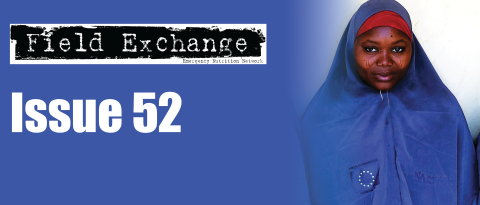ENN hosted Wasting-Stunting Technical Interest Group meeting
By Tanya Khara, ENN WaSt Project Consultant
On January 29th 2016, the ENN with USAID OFDA and Irish Aid funding convened the second meeting of the Wasting and Stunting (WaSt) Technical Interest Group (TIG) in London, UK. The TIG, comprising approximately 30 experts working on different aspects of wasting and stunting in research, programmes and policy, had been set up in 2014 as part of ENN’s project to further understand the relationship between wasting and stunting. This project was born out of previous ENN work which concluded that wasting and stunting tend to be dealt with separately in policy documents, are targeted by separate programmes, funded by different donor and government departments and are the subject of separate research. Answering the question(s) as to whether such a separation is justified, and how it might be bridged for the benefit of the children and families being targeted, has been the focus of the work of the TIG over the last two years. Outputs linked to the TIG have included reviews of available literature (Khara & Dolan 2014) (Briend et al 2014), a research prioritisation exercise (Angood et al. In Press PLOS One) and a panel on the burden of concurrent wasting and stunting in the 2015 Global Nutrition Report1. General advocacy by TIG members through international fora or local interactions, for the need to investigate and address these two form of undernutrition simultaneously, has also been ongoing.
The meeting allowed the TIG to take stock of the work to date and discuss the way forward for the new phase (2016 and 2017) of the project. It was agreed that the specific focus for this phase is to answer outstanding research questions identified in 2014-15 and prioritised during a research prioritisation exercise. In the meeting, the TIG identified those questions that might be answered by utilising available cross sectional and longitudinal data.
A number of TIG members presented their data from existing research projects, surveys or programmes (including Demographic Health Survey (DHS) compilations, the REFANI2 research project and MALED3 data) and outlined the opportunities these data offer for answering some of the identified priority questions on the relationship between wasting and stunting. Lively group discussion followed. In a number of instances, discussions within the TIG group itself served to identify specific ways that those presenting data could scrutinise it in order to contribute better to our understanding of the relationship between wasting and stunting. The group also identified a number of concrete opportunities for specific re-analysis of data, in particular from the Medical Research Council programme in The Gambia, and from compiled SMART survey data sets. It was agreed that these two projects would form part of the work plan for sub-sections of the group in 2016-17.
In general, the meeting concluded that there is value in looking into existing data, whilst being cognizant of its limitations. In the longer term, the need to look for funding for simple trials leading on from the findings of such investigations into existing data was highlighted. The TIG also agreed to redraft for submission a viewpoint article on the relationship between wasting and stunting calling for more joined up research, programming and policy.
Finally, the meeting concluded that the inclusion of other individuals/groups who are gathering or utilising related data would be encouraged, as the WaSt-TIG offers a unique opportunity to discuss issues around wasting and stunting from a technical perspective for all stakeholders. Being coordinated by ENN enables a neutral and open space for these discussions to take place.
ENN encourages any organisation or institution with specific analysis/data that you would like to share and discuss with this group to be in touch with the project coordinators, Carmel Dolan and Tanya Khara.
References
Khara T, Dolan C. The relationship between wasting and stunting, policy, programming and research implications. Technical Briefing paper. Oxford, UK: Emergency Nutrition Network; 2014.
Briend A, Khara T, Dolan C. Wasting and stunting--similarities and differences: policy and programmatic implications. Food Nutr Bull. 2015;36(1 Suppl):S15-23.
Angood C, Khara T, Dolan C, Berkley JA, and the WaSt Technical Interest Group. Research priorities on the relationship between wasting and stunting. PlosOne. In Press.


